HISTORY
Years ago I bought this beast of a lens on Ebay (225€) because I wanted to have an old fast tele lens on a budget. I had tried several old glasses before, and some where fine but others not. My all time favorite lens is the Nikon NIKKOR-S.C Auto 1:1.4 f=50mm. It is cheap, very sharp, stopped down to 2.8 and has a gorgeous swirly bokeh.
Speaking of Bokeh – in my opinion it is a very important factor when it comes to tele lenses and stopping them down. So my choice was the Carl Zeiss “Olympia” f2.8/180mm Sonnar with its 18 aperture blades, giving you creamy bokeh stopped all the way down.
It was possibly the most exclusive and expensive lens of that time. This lens had been developed by Carl Zeiss for the Olympic Games 1936 for a 35mm rangefinder camera and Contax CRM mount.
Leni Riefenstahl was filming and taking photos of the games with this lens, and her recordings enjoy a unique status and worldwide viewing to date. After World War II a big amount of those lenses was shipped to the Soviet Union as reparations and then became the base for a large number of variations from different brands.
The original Carl Zeiss “Olympia” f2.8/180mm Sonnar is very rare, just about 800 pieces have ever been manufactured.
Sure, it was developed as sports lens, but nowadays it is a “perfect” portrait lens, due to the not so perfect glass and coating, giving your images an interesting character. The bokeh you get out of old glass is something you just can not reproduce with modern lenses!
THE ADAPTER(s)
It wasn’t easy to get a rock solid way to adapt this lens to a modern camera, in my case a Canon 650D (APS-C) with a Pixco Exakta-EF Adpater and focus confirm-chip. Adapters without that chip are way cheaper, but on such a long lens I want to be sure to nail the focus, especially on a crop-camera, like the 650D.
To be honest – it never was the perfect solution. The chip worked very well, but almost every time I tried to pull the focus ring, the clamps on the adapter got loose, and in some cases I was holding the lens in one and the body on the other hand. So I had to be very carefull and could never rely on that
lens-adapter-combination. For that reason I never used that lens very often.
Until now:
Last year I bought a Canon 6D – and wanted to know how that lens performed on fullframe. Originally the Carl Zeiss “Olympia” f2.8/180mm Sonnar has been developed for 35mm format cameras and was later adapted to 6×6 medium format cameras like the Pentacon 6. So it was no problem to use it on fullframe. I again got excited to use this lens, but wanted to find a better adapter solution.
I researched on several websites until I found a company from Leipzig named Kurt-Dieter Huffziger. Back in the 60ies he developed an adapter especially for that lens to put it on Pentacon 6 (Kiev 66) cameras. So I went on eBay and voila! there was one of those original adapters. Lucky me I got it for 23€.
After that I never saw one of those adapters again – pheww!
But now I needed an adapter from Penatacon 6 to EF and I still wanted the confirm chip. There is just one manufacturer in the world selling those. It is “Fotodiox” from Illinois, USA. Thanks to them I can finally mount my 180mm Sonnar to the Canon 6D.
THE RESULT
What I got is a rock-solid and also lighter version of my Carl Zeiss “Olympia” f2.8/180mm Sonnar. It is very pleasing to the hand and because of the huge focus ring you can gently pull and nail focus. The aperture ring with the option to predefine the maximum aperture is pretty neat in the field. The “Fotodiox” – adapter with its confirm chip does also a verg good job, but to be honest its not always perfect. So I trustet my eye to get perfectly sharp images and the focus peek is more like a helper.
I am very impressed by the sharpness, color contrast and overall image quality this lens can produce. In difficult conditions and wide open at f2.8 you get a slightly soft image, but stopping down to f4 increases the quality much. The example images where shoot at f8.
Most of the time I am taking pictures of architecture and cityscapes, especially from my hometown Leipzig. I love the compression a tele lens can produce. Sometimes it is worth switching from ultrawide to tele for picking just a detail of the scene.
To demonstrate the nice bokeh I will shoot a portrait series soon.




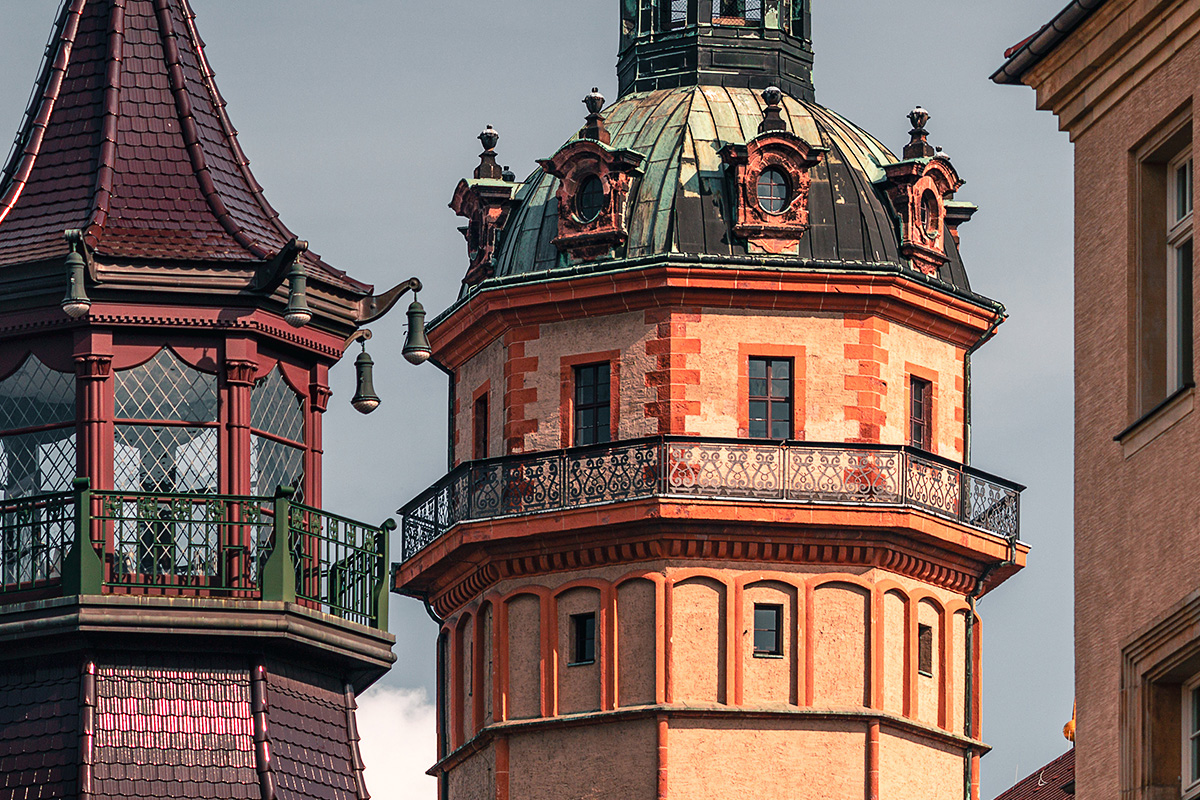
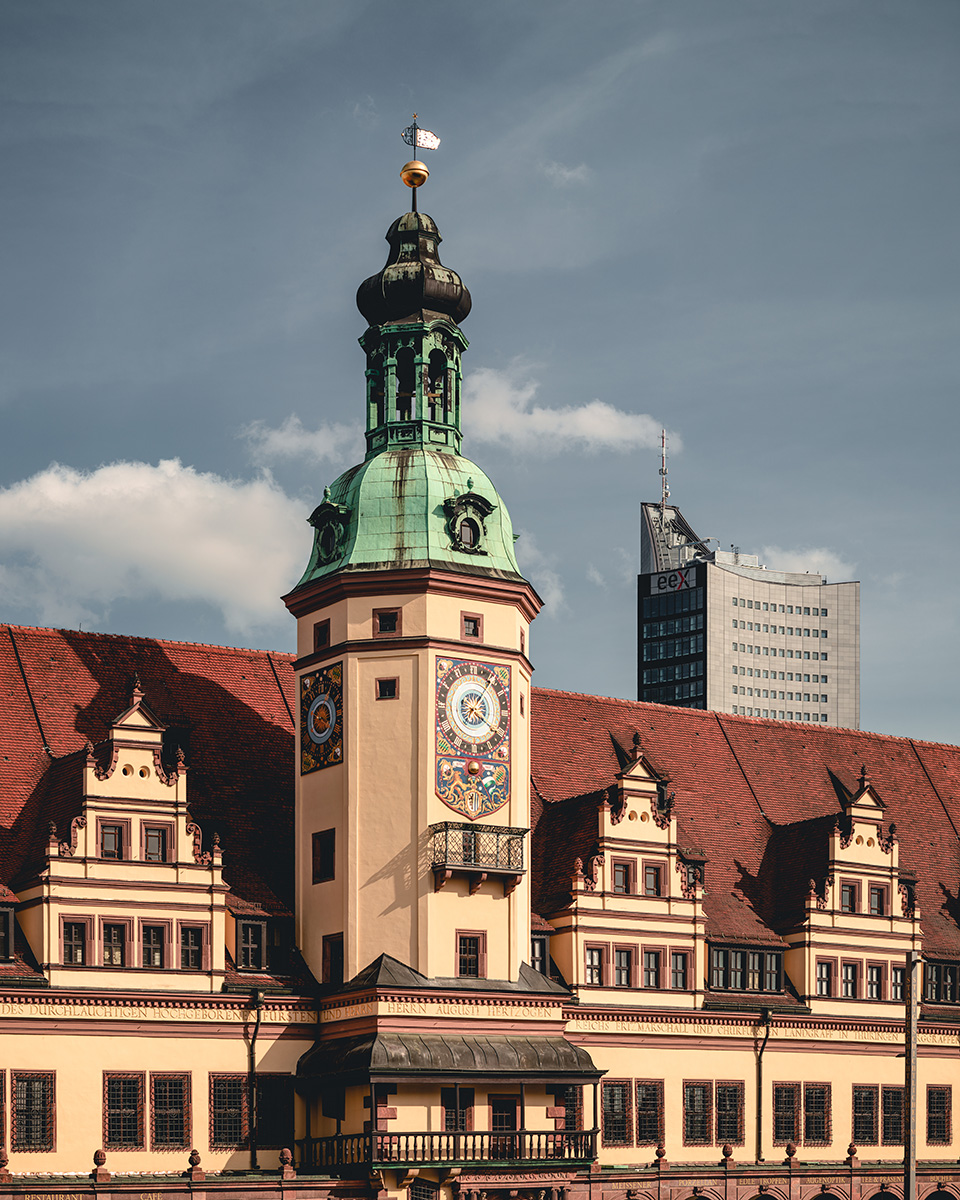



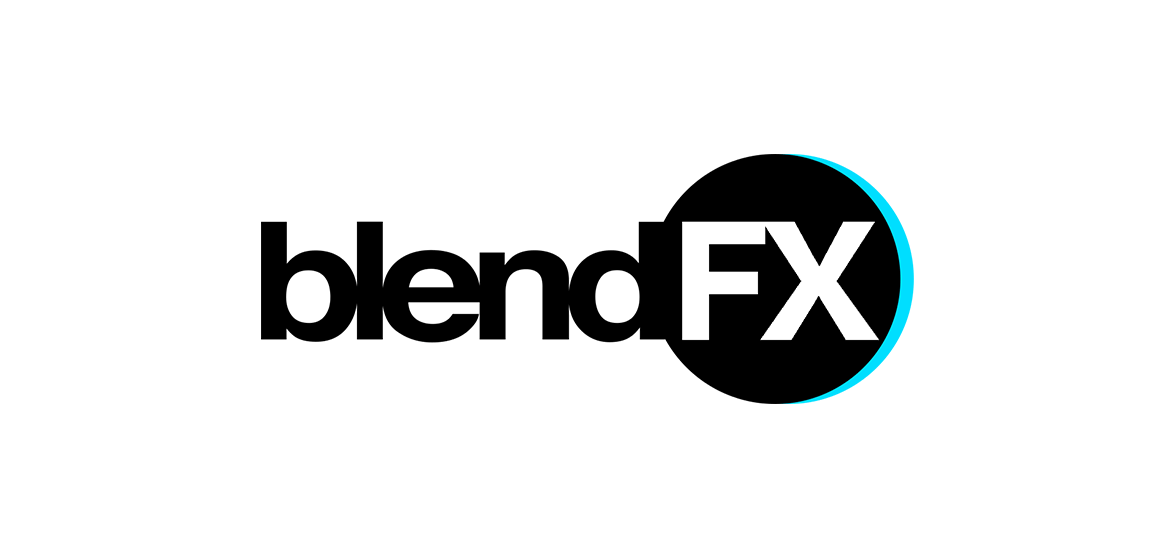
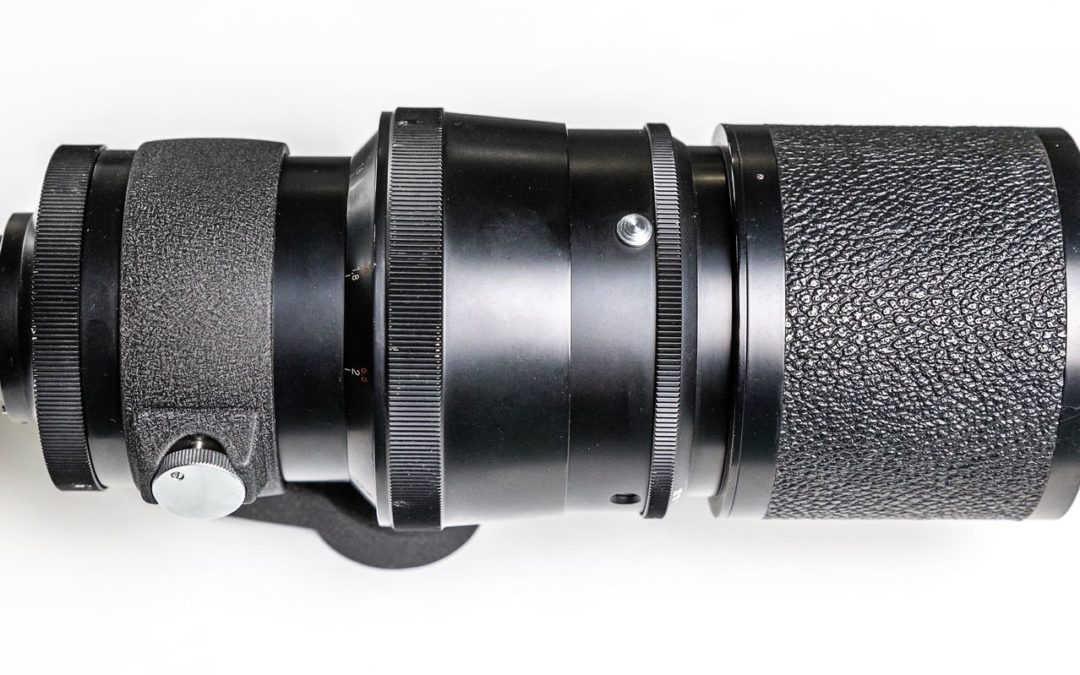

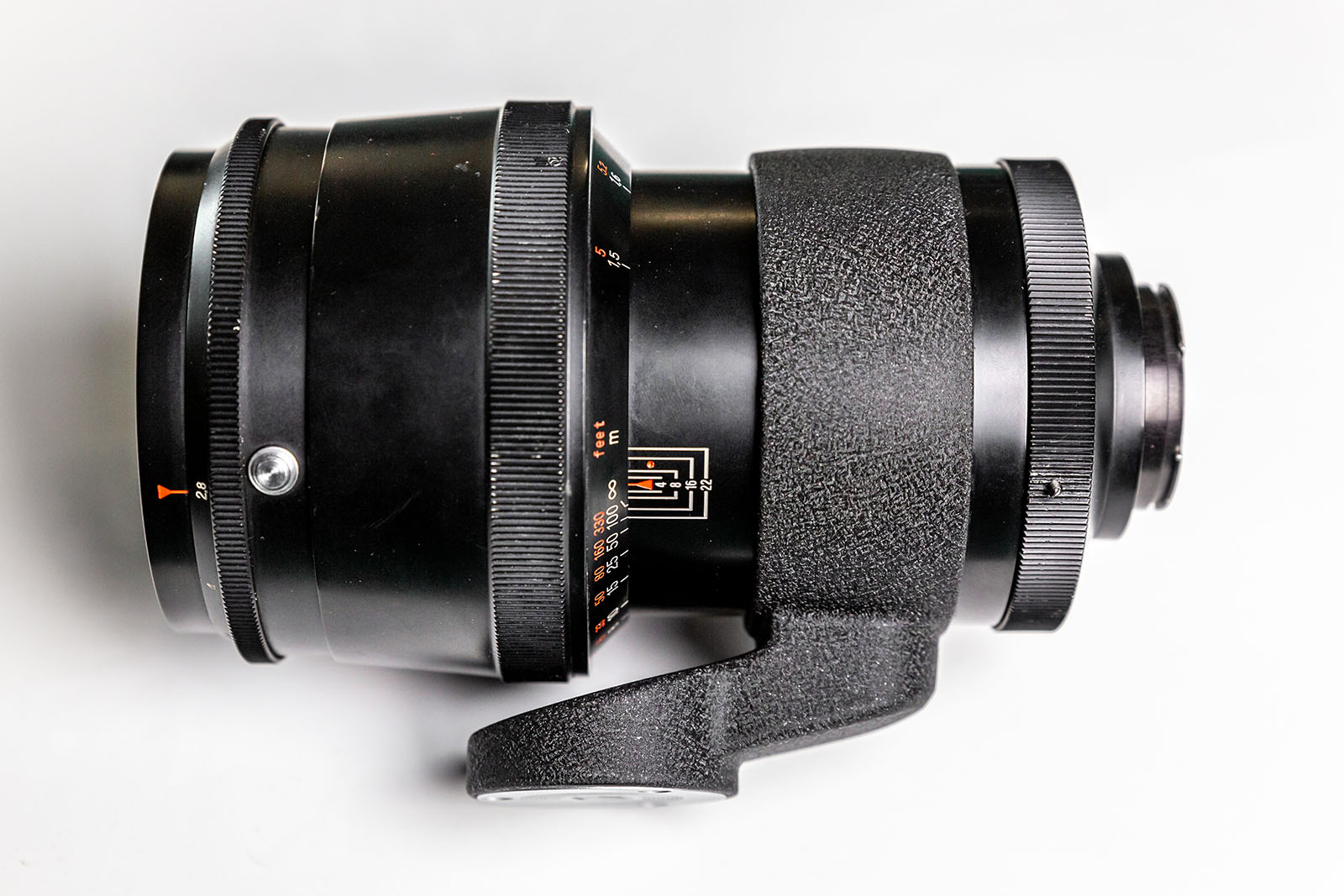
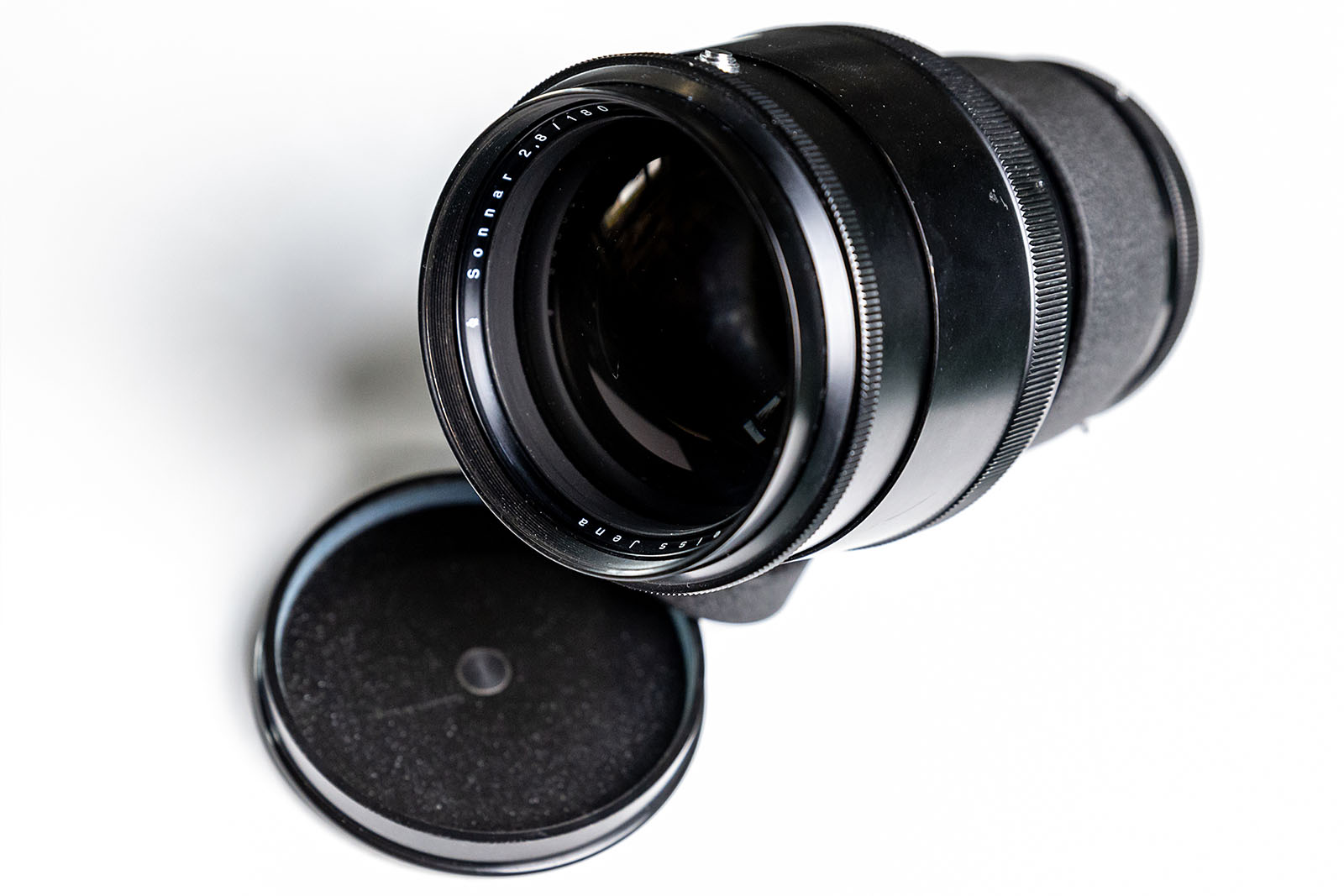


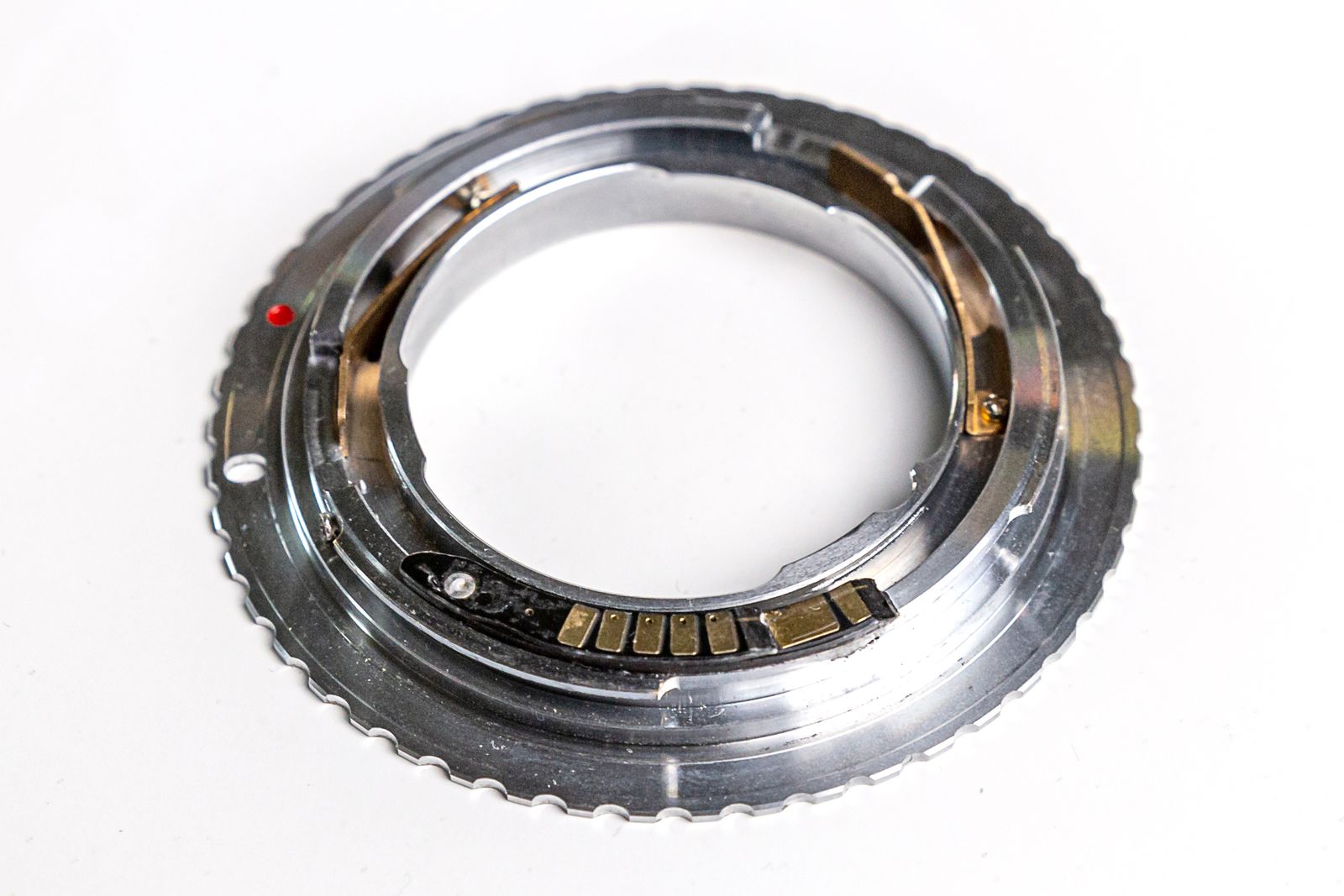
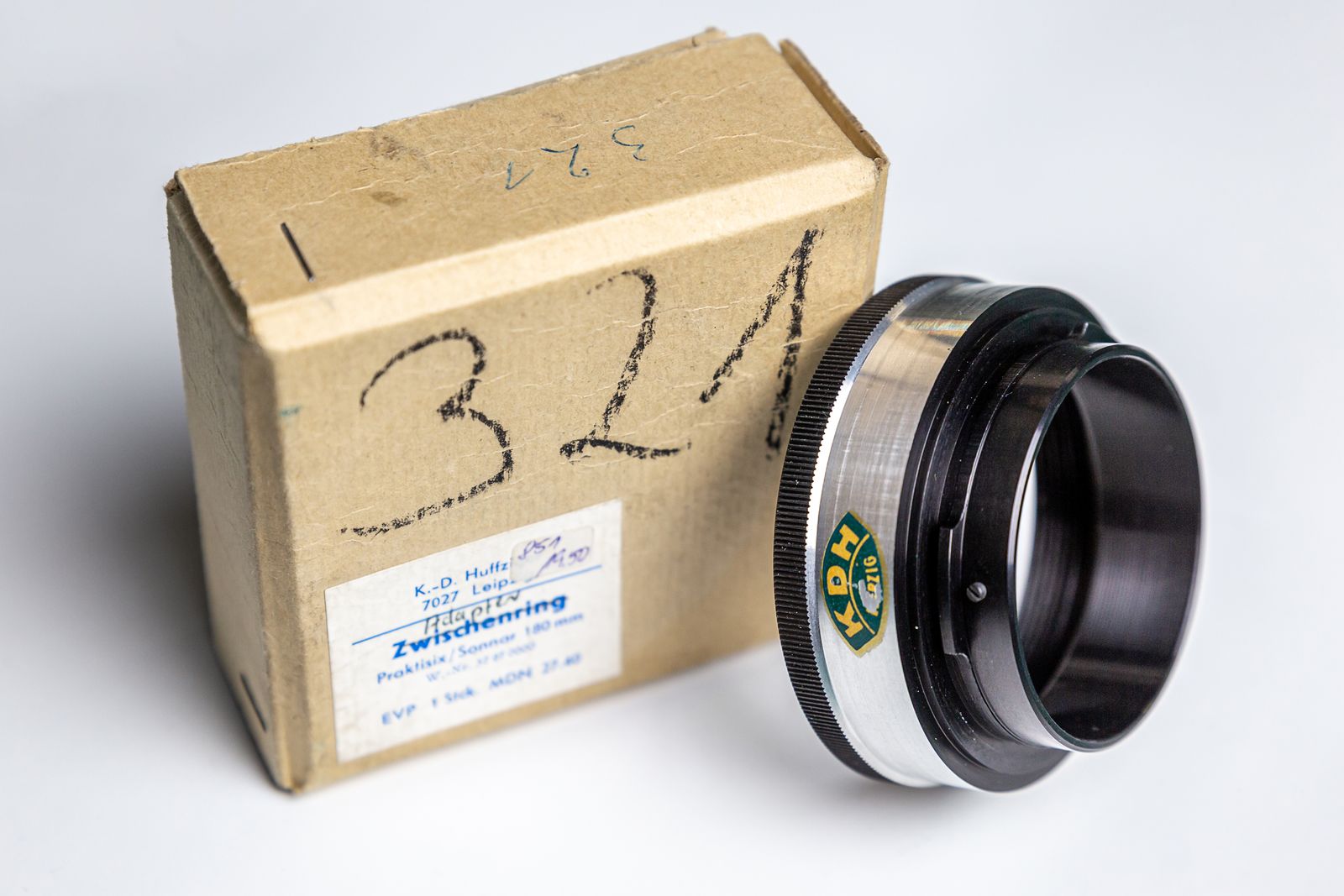

Very interesting story! I own an old Olympia Sonnar 2,8/180 ( black version) with pre-selection of aperture, but the preselection does not work, the f-number 22 only is shown in the small round window all the time and it is not possible to move the ring for preselection of the aperture. The 2 buttons cannot be pressed or shifted in any way. The normal aperture ring moves perfectly and close the blades from 2,8 to 22. What could be wrong with the preselection? Maybe you can help me.
Thanks for your hints.
Hi Ernst,
thank you for your comment. I think there is nothing wrong with your lens. I had the same issue finding out, how to switch the aperture for preselection.
You have to hold the element with the two “buttons” (these are no buttons, just handles) and then turn the aperture ring clockwise. It needs a bit pressure. Good luck :)
Falk
Hi Falk,
I have very rarely posted any comments on the online forums, so I’m not totally sure how it all works! I have posted a message to one of the comments on this discussion. I hope it was OK for me to do that before contacting you.
I very much enjoyed reading the article you posted, and your photos are superb.
I have just gotten back into film photography as I have many cameras I have collected over the past years, so I have decided to start using a few of them.
I will keep an eye out for future posts on this site.
Regards
Jason
Do you know what specifications and brand the large telephoto lens with the white collar mounted on an Askania 35mm cine camera Universal model with an electric motor used by Leni Reifenstahl’s camera operators on the rally film?
I believe she used a 600mm Leica cine lens for the 1936 Olympics …?
Thanks.
Hey Matt,
you are totally right. It was a 35 mm Askania Z with a 600 mmm Leica lens and her operator Hans Scheib was responsible for the close-ups.
So is the mount on the lens the same as the Pentacon P6 mount?
Hi Tiger. Yes, you can mount the lens on a Pentacon six, without the Fotodiox EF adapter.
Hi. I have a question, is the cover for this sonnar made of metal or plastic? Does it cause vignetting? Thanks for the answer.
Hi Ania,
you mean the lens hood. It’s made of plastic and i can’t see vignetting with it screwed on to the lens.
Hi.
Can you advise me on how to unscrew the tripod mount from the lens to be able to screw the p-six adapter? Is there any blockage or just a thread? Maybe you know what the diameter of this thread is, because I have an adapter, but I don’t know if it will fit?
Thank you for your answer and best regards.
Hi Ania,
you have to unscrew the metal screw ( the 1cm diameter silver screw on the side ) that holds the tripod mount in place and the headless screw underneath. Than you need some strenght to unscrew the whole tripod and old mount element. You should now be able to mount the first, the p-six adapter to it ( I hope you found one ). Good luck. Let me know, if you were successful :)
Best Regards
Hello Falk,
I have the same lens and need the adapter that you purchased but cannot find one anywhere. Can you help? It’s a beautiful lens that I would like to make use of.
Hi Paul,
the first, the old adapter ist pretty rare. I got mine from ebay. If found one for you:
https://www.ebay.de/itm/Adapter-Lens-Zeiss-Olympia-Sonnar-2-8-180mm-4-300mm-for-Pentacon-SIX/254706398581?hash=item3b4daf3575:g:G~MAAOSwGbtcwhKs
The second adapter is from fotodiox (in my case for Canon EF):
https://fotodioxpro.com/collections/canon-eos-ef-ef-s-mount-adapter/products/p6-eos-fc10
I woud love to see the result and some sample shots :)
Hi Falk
What was the original mount of the lens?
Thanks
Hi Louis. The original mount was exa exakta. cheers!
Hello Falk,
I am puzzled why you need a chip to tell you what is in focus – or not – with a medium telephoto lens, especially with this 2.8 speed. By optical nature these are the easiest to focus after all. On a crop camera it should be even easier if equiped with a good optical finder. Are you too reliant on electronics – that could play tricks on you as well?
I do appreciate your article and the effort that went into it, but I am not so pleased with the high frequency in which you show the build up of the lens with it’s adapters ; can you slow that down please?
Regards, Mike
Hi Mike,
for me, the focus chip is kind of a reference to be fast on point. After doing AF microadjustment it’s pretty close and when I shot wide open I am happy to have that information looking through the normal viewfinder of my Canon 6D. It’s not so easy to focus a telephoto lens that heavy without a tripod. The buildup-gif is just to see a quick breakdown, for that I wrote down my steps. Best regards, Falk
Hi Falk,
I am the proud owner of an Olympia 2.8…
I used to use it on my Hasselblad FP film camera….
That along with my 105 f2 were my most ‘personal lenses’.
I always found the color challenging. The images have a yellow cast.
I would love to adapt to my Nikons….
Marc
Hi Falk and Marc
Sorry that I’m late to this thread but I own a very interesting Olympic lens that has been adapted for Nikon f mount, I’ve never seen another! It looks professional, almost like a prototype but I guess it was a one off commission created by a talented engineer. Sadly its aperture blades were mangled when I found it, making aperture selection impossible. I took it apart and removed and stored the blades, making the lens a fixed aperture f 2.8, it could be easily fixed with some spare parts. Its still usable though wide open and I occasionally give it a go on one of my Nikon film bodies but the bokeh is a bit extreme for my tastes and as you said its a little soft and the contrast suffers a bit. If Marc is interested I can send some photos.
Simon.
I owned an original Olympia in the sixties. I had it adapted on my Bronica S. It was a very good lens for portrait with a wonderful Bokeh. I should have kept it since they are rare today but I left it with my Bronica in the eighties. Just too bad
Hi Jean Paul,
I have just read your post regarding the Sonnar that you left with the Bronica. I have just purchased a Bronica S2a with full kit including 3 lenses, one of which is a silver Sonnar 2.8/180cm. The Sonnar has been converted to fit this Bronica. I am just wondering if this was your old lens! The serial number on it is 2404161. The lens is in remarkably good condition and even has the original silver lens cap with it. I realise it’s been a long time, but maybe you have a record or pictures of the lens!
I would love to know the history of this lens, but there’s very little information out there on these lenses.
Any help you can give would be greatly appreciated.
Actually only 300 of the original Contax rangefinder mount Sonnar 18cm were made for use in the 1936 Winter and Summer Olympics. They did not have the Flektoskop reflex housing and are now extremely rare. I just happened on one, much to my delight ad surprise. They were used with a 18cm finder or multiformat turret viewfinder. The 800 n umber refers to the later reflex housing Sonnat made from 1938-40. Also rare but much easier to find. After the war production was resumed and by the 1950’s, versions were made for many 35mm and 6×6 cameras ending only in 1991.
Hello, I have this lens and am actually adapting it to some digital cameras. The ring to preset the aperture is stuck. The two little aluminium knobs to move the preset ring don´t move. The preset is actually on f 22, so I can use the lens. Are there any informations how to move this preset ring normaly, I don`t want to force it, or exists a manual? If it ist stuck defintively: Is there some talented mecanic, who knows how to make ist work. – Actuation of focusing ring needs also more power than normal. – The results of this lens are amazing. – I´d like to exchange information with someone who knows about this lens (in German or English). Kind regards to everybody interested.
Hello Wolfgang,
the two little aluminum knobs doesn’t move – that’s correct. You have to hold the knobs e.g. between your thumb and middlefinger at f2.8. and then turn the black jagged wheel above counterwise. That’s how you lock the aperture presets and you’ll see the aperture setting on the side. Best Regards
I have one on the way to me, in Praktina mount, since I have a Praktina. The P6 adapter sounds great, would be a good way to use the lens as well on my Pentax 645n! I think I see one of the adapters on eBay, not cheap though. Is this the correct one? https://www.ebay.com/itm/266607219740
So, changing from one mount to the other, in my case Praktina to P6, takes a screwdriver and a few minutes right? Not as far as a simple adapter, but sounds doable since I wouldn’t do it in the field…
Hi Anton,
you are right – this is the correct adapter, but damn it’s expensive. I was lucky to get mine really cheap. But as you can see, they are pretty rare. Yes you can change it with a small screwdriver, but be patient. Those screws are tiny and a bit sensitive. Good luck. Best Regards
Great, thanks! I am not really in a rush and might look around for a better deal for the adapter, have to wait anyways for the lens to arrive, from Germany to Canada.
Hi Falk.
I received my Carl Zeiss 180mm f/2.8 yesterday.
Mine has a Pentacon6 mount, and I am using it on my Fujifilm GFX50R.
It is hard for me to shoot it hand-held, so I am using a tripod for it.
The PEIPRO P6-GFX adapter that I use has a tripod mount attached to it.
Which is great, because I don’t get the full weight of the lens on the camera.
Focusing ring has become a little stiff, I think my model is from the 1980s, but everything works well.
I am looking forward to using it. Today, actually for its original purpose: sports! As my son has a soccer match today. That said, 180mm is not very long on a medium format camera, so not sure how that will go.
I owned the 1936 version in the 60’s and adapted it for a Bronica S. This was a very good portrait lens. I stupidly sold it for triffles when I switched to 35mm. I do regret it.
By the way I also had an Hermagis 150mm lens that gave an “Hamilton like” render, that I also regret.
Technical peformance does not always means better rendering!!!